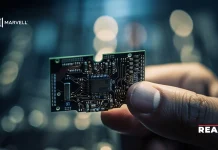Precast concrete is manufactured off-site using reusable molds, and then joined together to form complete structures in a controlled industrial setting. It offers affordability and versatility compared to traditional building materials, commonly used for structural elements like columns, floors, stairways, wall panels, beams, pipes, and tunnels. According to Extrapolate, the precast concrete market accrued a valuation of $118.4 billion in 2021 and is projected to hit $159.8 billion by 2028. Let’s dive into everything you need to know about precast concrete wall panels.
What Is Precast Concrete?
Precast concrete is a building material that is made by pouring concrete into disposable molds or forms, allowing the concrete to cure in a defined environment, and then moving the assembled parts to the construction site. Using this technique, concrete components are made off-site, usually in a precast facility.
The use of precast provides several advantages in construction. It accelerates construction schedules by manufacturing elements in advance, reducing on-site labor and potential delays. Interestingly, the Infrastructure Investment and Employment Act passed in late 2021, boosted demand for precast concrete products by allocating $1 trillion over eight years for various US infrastructure projects, including bridge rehabilitation, road improvements, and public utility upgrades.
How Is Precast Concrete Different From Regular Concrete?
Precast differs significantly from regular or cast-in-place concrete in several key aspects:
- Manufacturing Process: It is usually produced at a precast plant off-site in an environment that is monitored. Before being delivered to the construction site for installation, concrete is poured into molds or formworks and allowed to cure under carefully monitored circumstances. Regular concrete, on the other hand, is mixed and poured into formworks right there on the job site.
- Quality Control: The curing process is closely monitored, ensuring consistent strength and durability. Regular concrete poured on-site, is subject to the conditions and variables present at the construction site, which can affect the quality and consistency of the final product.
- Construction Time: It allows for faster construction times compared to regular concrete. Since the precast elements are manufactured off-site, they can be quickly transported and installed, reducing on-site labor and potential delays. Regular concrete requires more time for mixing, pouring, and curing on-site.
- Design Flexibility: It provides greater design flexibility because it can be molded into various shapes and sizes to meet specific project requirements. The molds used in precast production allow for intricate detailing and customization. In contrast, regular concrete, while still versatile, may have limitations in achieving complex designs due to the on-site pouring process.
- Application: It is commonly used in low to mid-rise buildings such as apartments, hotels, and offices, where the shorter lead times and increased durability of precast elements are advantageous. Regular concrete is used in a wide range of construction projects, including buildings, bridges, highways, and infrastructure.
What Are The Benefits Of Using Precast Concrete?
Precast provides significant advantages in construction, offering a range of benefits:
- Time Efficiency: It accelerates project timelines by allowing simultaneous manufacturing with other on-site activities like earthwork and foundation preparation. This parallel construction process minimizes project duration and reduces the risk of delays.
- Quality Assurance: Produced in controlled factory environments, precast concrete ensures superior quality control compared to on-site casting. Controlled conditions lead to consistent curing, enhancing the durability and quality of concrete elements.
- Design Versatility: It offers extensive design flexibility, allowing it to be molded into various shapes and sizes to meet specific project requirements. It supports customization with different colors, textures, and finishes, providing aesthetic appeal.
- Durability: Known for its resilience, precast withstands environmental challenges such as corrosion, fire, and impact. The controlled curing process and use of high-quality materials ensure long-term structural integrity and performance.
- Cost Effectiveness: Despite higher upfront costs, precast offers long-term savings due to its durability and low maintenance requirements. Reduced repair and replacement needs over the structure’s lifespan contribute to cost efficiency.
- Labor Efficiency: Prefabricated off-site, it minimizes on-site labor requirements, enhancing overall project efficiency and reducing construction time and costs.
Future Prospect of Precast
The future of construction is likely to involve a combination of precast concrete and 3D printing technologies. It offers advantages such as time savings, quality control, design flexibility, durability, and cost savings. It is already widely used in various construction projects. On the other hand, 3D printing has the potential to revolutionize the construction industry by enabling the rapid and efficient production of complex concrete structures. The use of 3D printing in precast construction can further enhance speed, precision, and customization.
Browse More Posts:-
Aerosol Filling Machines Market
Spirulina Powder Market
Aerosol Filling Machines Market
Spirulina Powder Market




